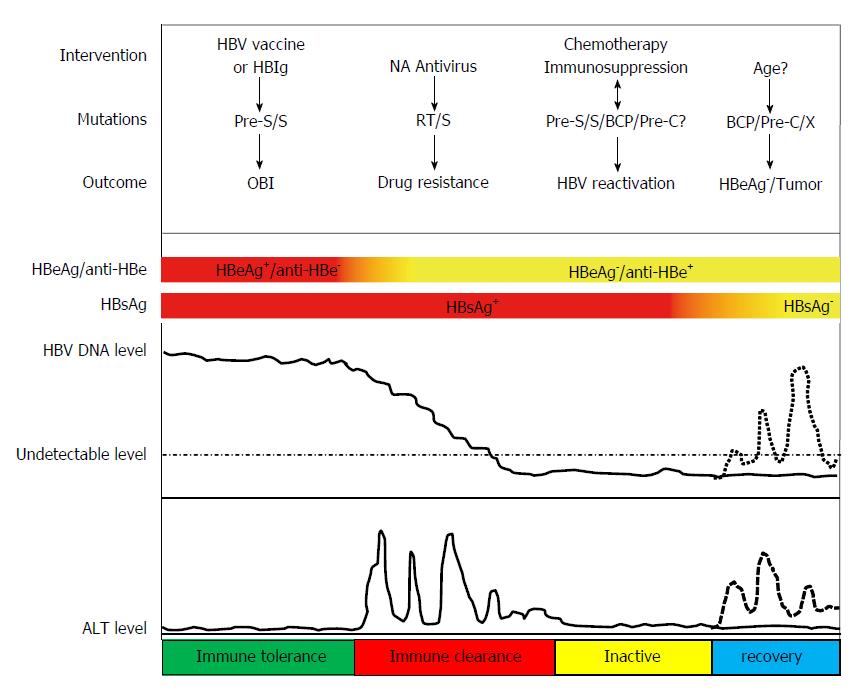Copyright
©The Author(s) 2016.
World J Gastroenterol. Jan 7, 2016; 22(1): 126-144
Published online Jan 7, 2016. doi: 10.3748/wjg.v22.i1.126
Published online Jan 7, 2016. doi: 10.3748/wjg.v22.i1.126
Figure 1 Interventions, mutations and clinical outcomes in the natural history of hepatitis B virus infection.
The natural history of hepatitis B virus (HBV) infection is typically classified into 4 phases: immune tolerant, immune clearance, inactive and recovery phase. Patients who receive HBV vaccine and/or hepatitis B immunoglobulin (HBIg) injection may develop chronic HBV infection with PreS and/or S gene mutations, this phenomenon is called occult HBV infection (OBI); during the immune clearance phase, long-term use of NAs can select for mutations in the reverse transcriptase (RT) and S regions; HBV reactivation may occur during the inactive phase in patients with hepatitis B surface antigens (HBsAg) and/or anti-HBc positive after chemotherapy or immunosuppression. HBV isolated from these patients may harbor mutations in the PreS, S, basal core promoter (BCP) or Pre-C regions. The causal relationship between these mutations and chemotherapy or immunosuppression is unclear; with increasing age, some patients can develop BCP, Pre-C or X region mutations or HBV DNA integration leading to hepatitis B e antigen (HBeAg) negativity or tumor.
- Citation: Zhang ZH, Wu CC, Chen XW, Li X, Li J, Lu MJ. Genetic variation of hepatitis B virus and its significance for pathogenesis. World J Gastroenterol 2016; 22(1): 126-144
- URL: https://www.wjgnet.com/1007-9327/full/v22/i1/126.htm
- DOI: https://dx.doi.org/10.3748/wjg.v22.i1.126









